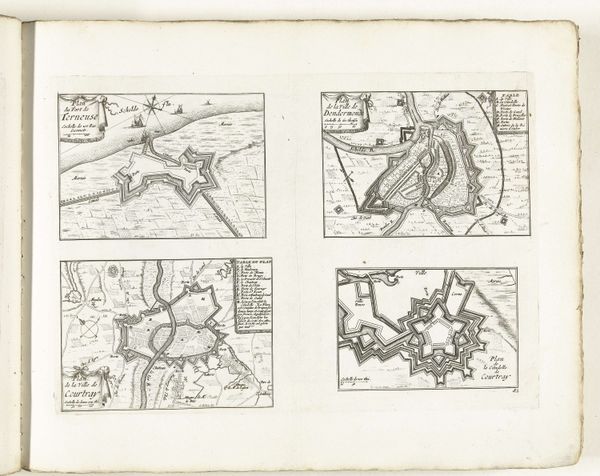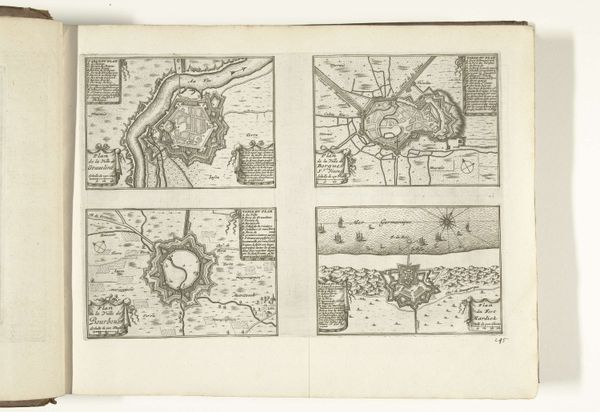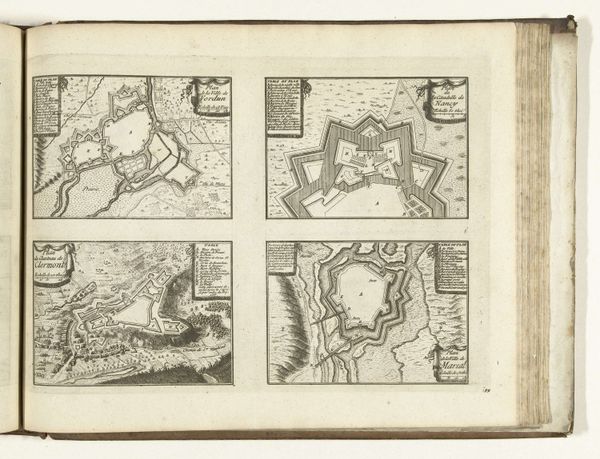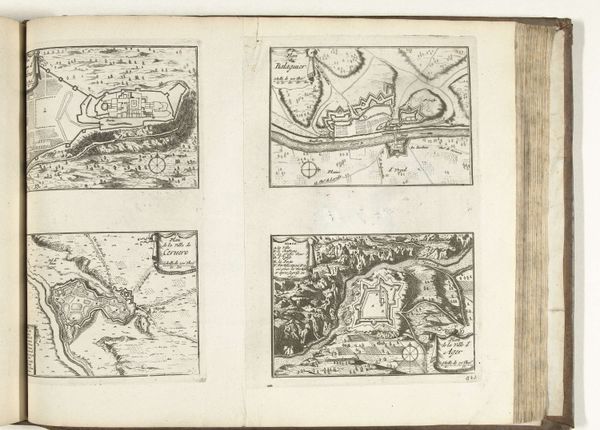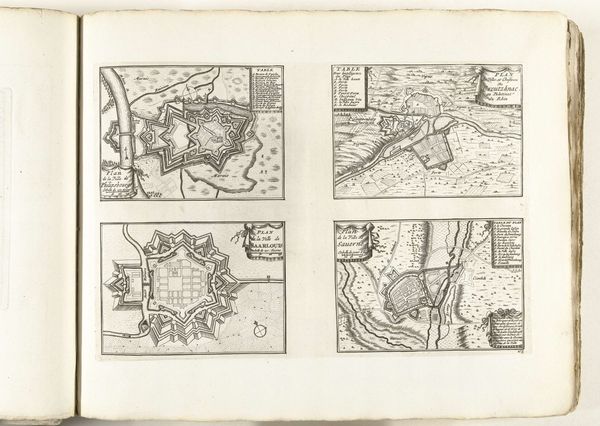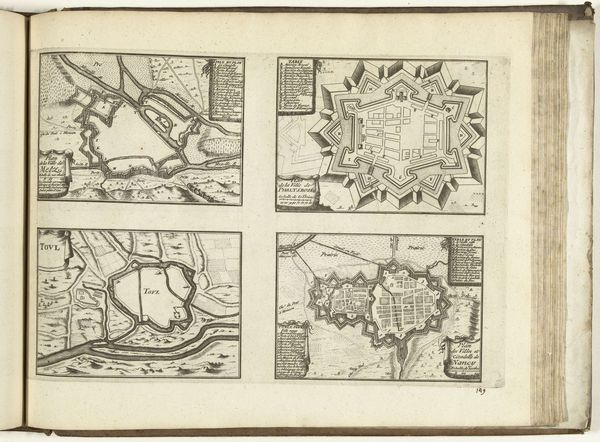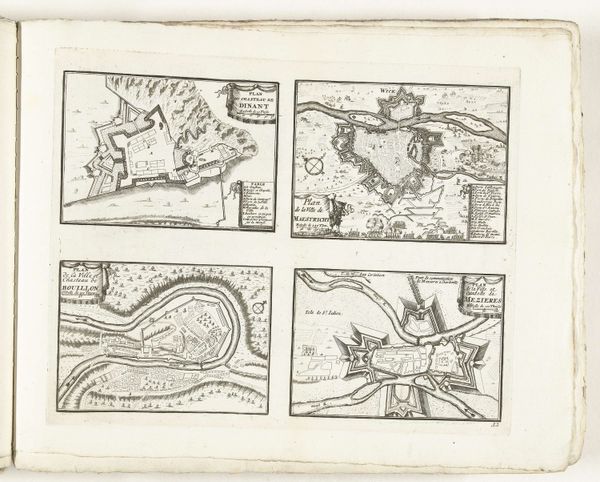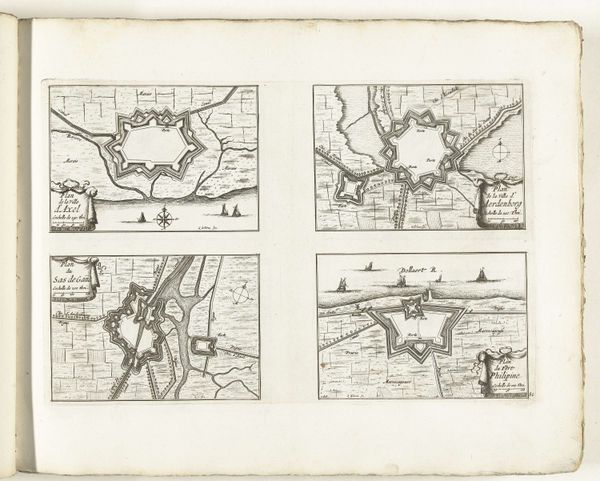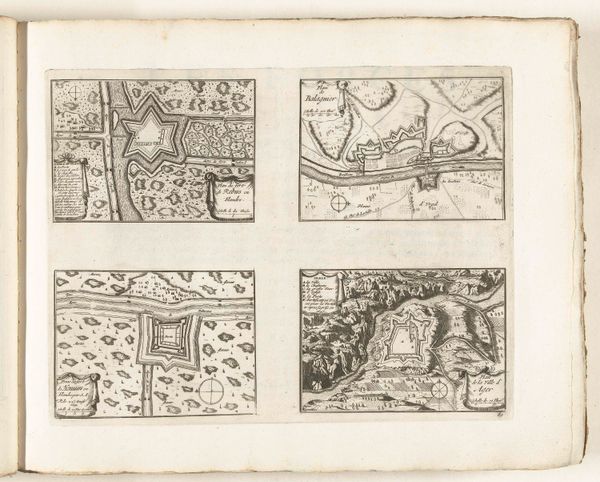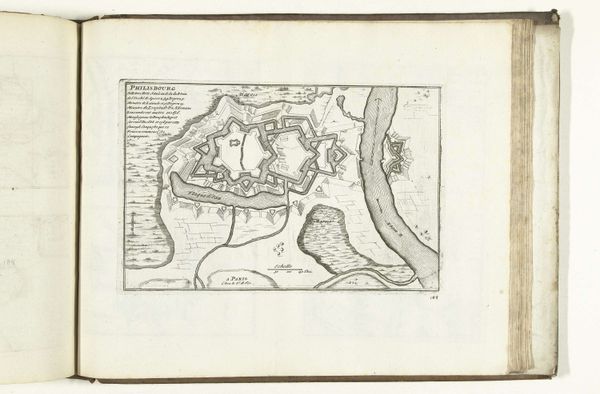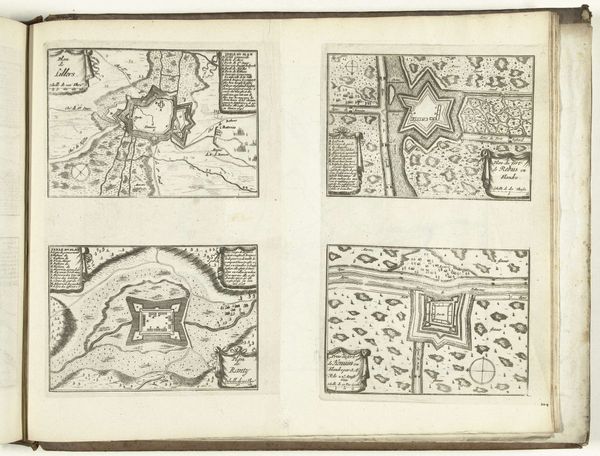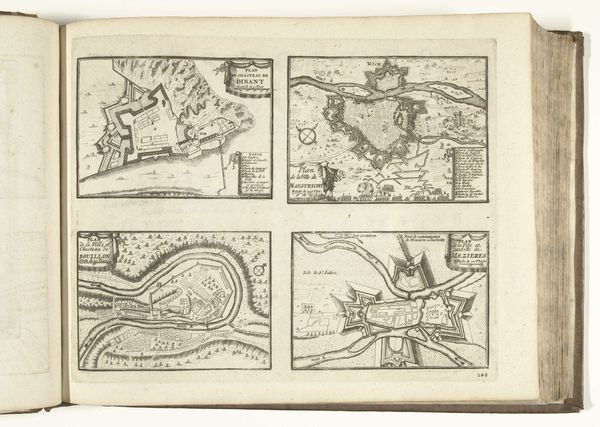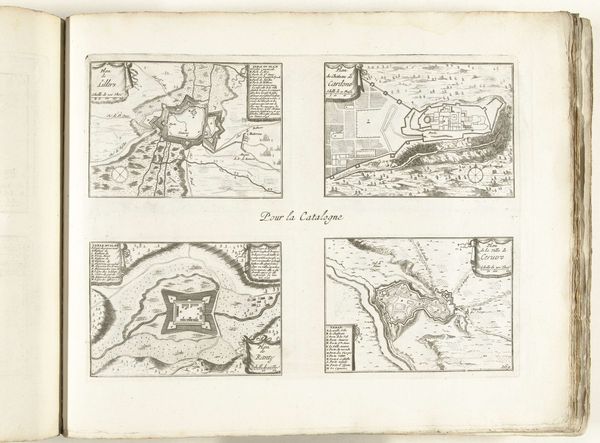
Plattegronden van Landrecies, Bouchain, Avesnes en le Quesnoy, ca. 1702 1702 - 1703
0:00
0:00
drawing, ink
#
drawing
#
aged paper
#
toned paper
#
baroque
#
pen sketch
#
personal sketchbook
#
ink
#
ink drawing experimentation
#
geometric
#
pen-ink sketch
#
line
#
pen work
#
sketchbook drawing
#
cityscape
#
history-painting
#
storyboard and sketchbook work
#
sketchbook art
Dimensions: height 246 mm, width 361 mm
Copyright: Rijks Museum: Open Domain
These plans of Landrecies, Bouchain, Avesnes and le Quesnoy were etched around 1702 by an anonymous artist. They depict fortified cities, with star-shaped walls jutting outwards, a common design in military architecture of the time. The star fort, or bastion fort, emerged in the 16th century. These fortifications represented not just physical barriers but also a psychological assertion of power. Recall the geometric order in Renaissance art; this star shape embodies a similar quest for control and rationality. Yet, consider this: long before the Renaissance, cultures across the globe revered the star as a symbol of guidance, divinity, and cosmic order. From the Star of Ishtar in ancient Mesopotamia to the stars adorning the robes of celestial deities, the star motif carries profound cultural weight. The fortifications here are not just defensive structures but a forceful imposition of human will on the landscape, echoing that primal need for protection. They engage us on a deep, subconscious level. The star fort thus represents a fascinating intersection of human ingenuity and the enduring power of symbols. Its evolution reflects our ongoing negotiation with themes of security, dominance, and our place in the cosmos.
Comments
No comments
Be the first to comment and join the conversation on the ultimate creative platform.
